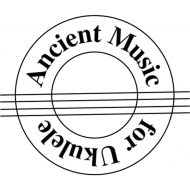Selection of Music for this Book
All the pieces in this book were written for the Vihuela and are from Libro I of Fuenllana’s publication Libro de música para vihuela intitulado Orphenica Lyra (Seville, 1554).
Some of the pieces have already been arranged and included in the book “Favourites of Fuenllana on the Ukulele (Book 1)” from Ancient Music for Ukulele.
Notes on the Composers and Pieces
All sources are Wikipedia.
A duo or duet is a musical composition for two voices or parts. Many of the duos presented are individual movements from larger works, such as masses. Duos were excellent pieces for new musicians and singers to learn about musical notation and techniques by practising with a partner.
Miguel de Fuenllana (ca 1500 – 1579) was a Spanish vihuelist and composer of the Renaissance. Little is known of his life. It is assumed from his name that his roots lie in the municipality of Fuenllana, in the province of Ciudad Real, although he was born in Navalcarnero, Madrid. He was blind from birth and servied in the Spanish court to Philip II of Spain and Isabel de Valois, third wife of Philip II. He later served Don Sebastian of Portugal in Lisbon starting in 1574.
He published a Libro de música para vihuela intitulado Orphenica Lyra (Seville, 1554), known briefly as Orphenica Lyra. His style is polyphonic and he was adept at finding apt harmonies and counterpoint to popular melodies.
Orphenica Lyra constitutes the largest collection of music for vihuela (and renaissance guitar). It is made up of 188 pieces spread over six books. Of these, approximately two-thirds are arrangements of pieces or transcriptions of polyphonic vocal work by other Spanish, Flemish and Italian Renaissance composers.
Josquin des Prez (ca 1450/22 – 1521) was a French composer of High Renaissance music A central figure of the Franco-Flemish School, Josquin is considered among the greatest composers of the Renaissance and had a profound influence on the music of 16th-century Europe.
Cristóbal de Morales (ca 1500 – 1553) was a Spanish composer of the Renaissance. He is generally considered to be the most influential Spanish composer before Tomás Luis de Victoria
Mateo Flecha the Elder (1481–1553) was a Catalan composer born in Kingdom of Aragon, in the region of Prades. He is sometimes known as “El Viejo” (the elder) to distinguish him from his nephew.
Francisco Guerrero (1528 – 1599) was a Spanish Catholic priest and composer of the Renaissance. He was born and died in Seville.
Notes on the Tabulature
Italian tabulature was used by Spanish composers Mudarra, Fuenllana and others in the 16th century in music for the vihuela and Renaissance guitar. It almost looks like modern tabulation in that it uses numbers to represent the frets (zero for an open string, “1” for the first fret, “2” for the second fret, etc.) The duration of the notes are above the staff and look like our modern notes (whole notes, half notes, quarter notes), including dotted notes. Italian tabulature has the highest sounding string on the bottom line and the lowest sounding string on the top line (i.e. upside down from modern tabulation).
